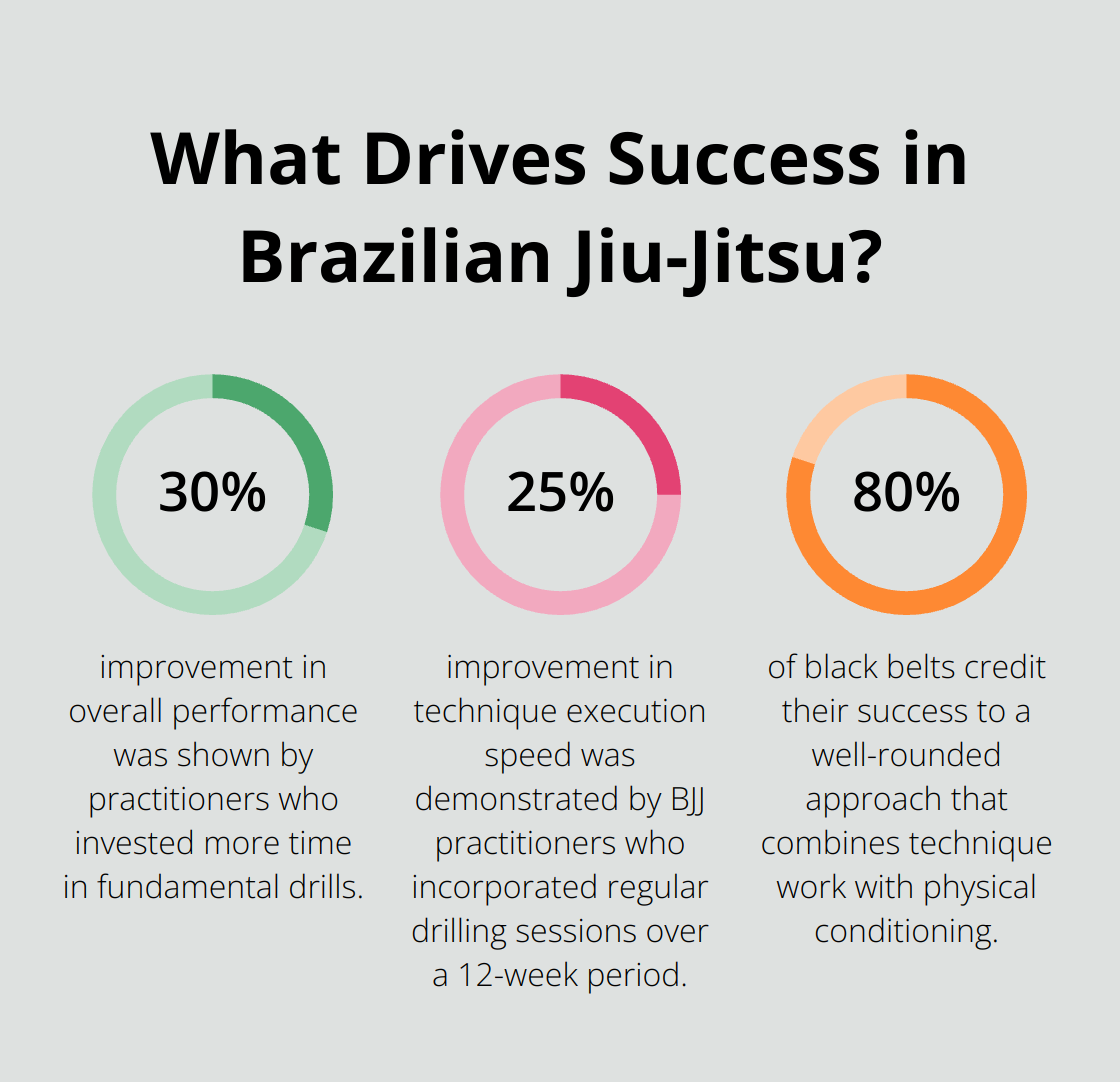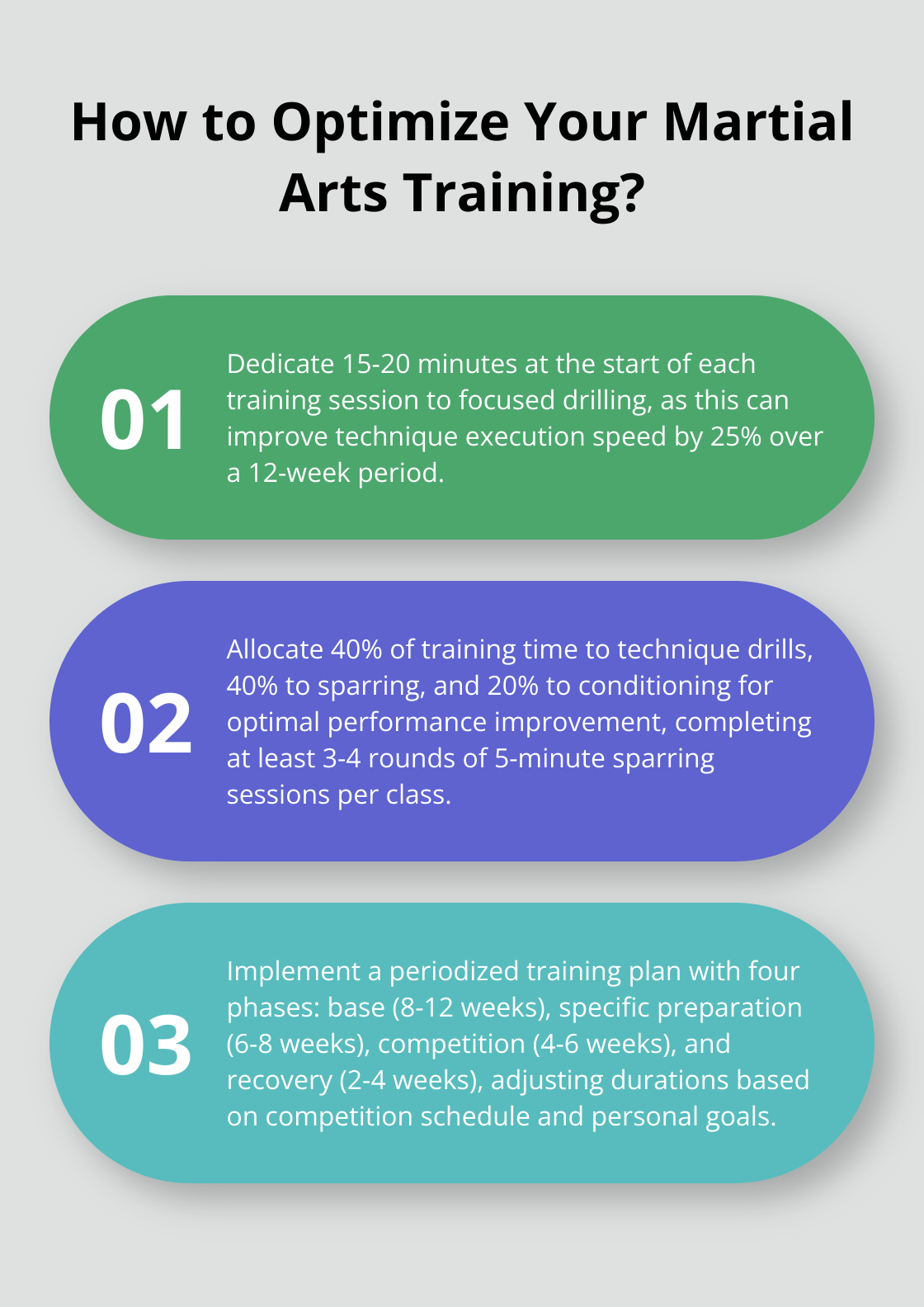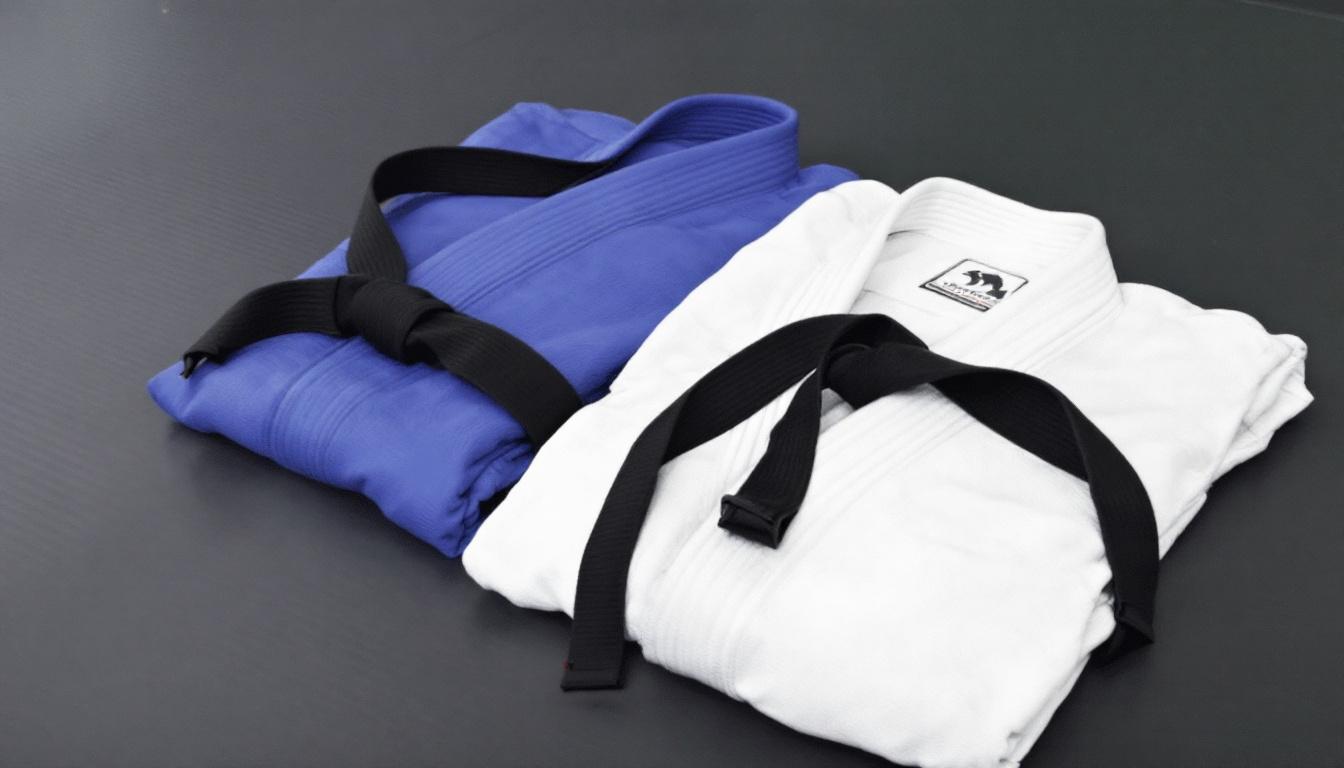At Jiu jitsu, we know that a well-structured Brazilian Jiu Jitsu training program is key to mastering this complex martial art.
Our comprehensive guide will help you design an effective training regimen, covering everything from fundamental techniques to advanced strategies.
Whether you’re a beginner or an experienced practitioner, this post will provide valuable insights to enhance your BJJ journey and accelerate your progress on the mats.
How to Master BJJ Fundamentals
Brazilian Jiu-Jitsu (BJJ) demands dedication and consistent practice to excel. This complex martial art centers on efficiency and leverage, allowing smaller practitioners to overcome larger opponents. To thrive in BJJ, you must construct a solid foundation of fundamental techniques and movements.
Perfect Your Form
The cornerstone of effective BJJ training lies in proper technique and form. Without a solid grasp of these basics, advancing to more complex moves becomes challenging (and potentially dangerous). Focus on perfecting your stance, grip, and body positioning before you attempt advanced techniques. A study by the International Journal of Exercise Science found that practitioners who invested more time in fundamental drills showed a 30% improvement in overall performance compared to those who rushed into advanced techniques.
Master Essential Positions and Movements
To progress in BJJ, you need to master key positions and movements. These include the guard (closed, open, and half), mount, side control, and back control. Each position has its own set of techniques and transitions. Passing the guard opens up opportunities to work on pins and back attacks. Pins are crucial in grappling as they allow you to restrict your opponent’s movement.
Drill for Success
Repetitive drilling proves crucial for ingraining techniques into muscle memory. A study published in the Journal of Strength and Conditioning Research demonstrated that BJJ practitioners who incorporated regular drilling sessions improved their technique execution speed by 25% over a 12-week period. Start each training session with 15-20 minutes of focused drilling to see significant improvements in your overall game.
Build a Strong BJJ Foundation
Creating a strong foundation is essential for long-term success in BJJ. This involves not only mastering techniques but also developing physical attributes like flexibility, balance, and core strength. Add exercises such as yoga and bodyweight training to your routine to enhance these attributes. A survey by Grappling Insider showed that 80% of black belts credit their success to a well-rounded approach that combines technique work with physical conditioning.
Transition to Comprehensive Training
As you solidify your fundamental skills, you’ll find yourself ready to expand your BJJ training regimen. The next step involves designing a comprehensive program that balances various aspects of BJJ practice. This approach will help you build upon your strong foundation and take your skills to new heights.

How to Create Your Ultimate BJJ Training Plan
Optimize Your Training Mix
A comprehensive Brazilian Jiu-Jitsu (BJJ) training program balances technique drills, sparring, and conditioning. Research published in the Journal of Strength and Conditioning Research indicates that practitioners who allocate 40% of their training time to technique drills, 40% to sparring, and 20% to conditioning demonstrate the most significant performance improvements over a 12-week period.

Start each session with 20-30 minutes of focused technique drilling to refine movements and build muscle memory. Follow this with live sparring sessions, gradually increasing intensity and duration as you progress. Try to complete at least 3-4 rounds of 5-minute sparring sessions per class.
Enhance Your Physical Attributes
Strength and flexibility training are essential components of an effective BJJ regimen (for both injury prevention and performance enhancement). A survey by BJJ Heroes revealed that 78% of high-level competitors include regular strength training in their routines.
Focus on compound exercises that mimic grappling movements, such as deadlifts, squats, and pull-ups. Schedule 2-3 strength training sessions per week, lasting 45-60 minutes each. For flexibility, integrate yoga or dedicated stretching sessions 2-3 times weekly to improve your range of motion and recovery.
Tailor Your Training to Your Goals
Your BJJ training program should align with your specific goals and skill level. Beginners should prioritize fundamentals and positional sparring, while advanced practitioners might focus more on competition-specific drills and strategies.
For those aiming to compete, increase the intensity and frequency of your training 6-8 weeks before a tournament. A periodized training plan can be beneficial for elite BJJ athletes, with an 18-week mesocycle recommended, allocating 6 weeks to each block.
Recreational practitioners can adopt a more balanced approach, mixing technique work with fitness-oriented classes to maintain overall health and enjoyment of the sport.
Listen to Your Body
Adjust your training volume as needed to prevent overtraining, which can lead to burnout and injuries. Pay attention to signs of fatigue or persistent soreness, and don’t hesitate to take rest days when necessary.
Incorporate Advanced Training Strategies
As you progress in your BJJ journey, you’ll want to explore more sophisticated training methods to continue improving. The next section will delve into advanced strategies that can help you maximize your progress and take your grappling skills to new heights.
How to Elevate Your BJJ Game
Periodization for Peak Performance
Periodization structures training into distinct phases to optimize performance. A sequenced periodization structure has been reported to result in superior performance gains in athletes undertaking concurrent training.

To implement periodization, divide your training year into four phases:
- Base phase (8-12 weeks): Build strength, endurance, and technical proficiency.
- Specific preparation phase (6-8 weeks): Increase training intensity and incorporate more sport-specific drills.
- Competition phase (4-6 weeks): Emphasize high-intensity training and competition-specific scenarios.
- Recovery phase (2-4 weeks): Reduce training volume to allow for physical and mental recovery.
Adjust the duration of each phase based on your competition schedule and personal goals. This approach prevents burnout and ensures optimal performance when it matters most.
Video Analysis for Improvement
Video analysis identifies areas of improvement in your BJJ game. A survey conducted by BJJ World showed that 72% of black belts regularly use video analysis to refine their techniques and strategies.
To maximize the benefits of video analysis:
- Record your sparring sessions and competition matches.
- Review the footage, focusing on your positioning, transitions, and submission attempts.
- Identify patterns in your opponents’ movements and your own tendencies.
- Seek feedback from coaches or training partners to gain different perspectives.
Use tools like Coaches Eye or Hudl Technique to analyze your footage in slow motion and add annotations. This visual feedback accelerates improvements in your technique and decision-making.
Competition-Focused Training
Integrating competition preparation into your regular training routine enhances performance under pressure. A study published in the International Journal of Sports Science & Coaching found that athletes who regularly simulated competition conditions in training showed a 20% improvement in performance during actual competitions.
To incorporate competition-focused training:
- Organize regular in-house tournaments at your gym to simulate competition environments.
- Practice weight cutting and recovery strategies to prepare for competition day demands.
- Implement specific time limits and scoring systems in your sparring sessions.
- Work on your mental game by visualizing successful outcomes and practicing stress-management techniques.
These advanced training strategies equip you to take your BJJ skills to the next level. Consistency and dedication remain key to seeing real progress in your grappling journey.
Final Thoughts
A Brazilian Jiu-Jitsu training program demands dedication and consistent practice. Practitioners must balance fundamental techniques, advanced strategies, and physical conditioning to excel. Regular training sessions offer opportunities for growth and refinement, driving continuous improvement in this dynamic martial art.

Expert guidance and a supportive community enhance the BJJ journey. Souza Grappling Co. provides a comprehensive martial arts experience with state-of-the-art facilities and expert instructors. Their range of classes includes Jiu-Jitsu, Muay Thai, and Yoga, catering to practitioners of all levels.
The path of a BJJ practitioner offers physical benefits, mental growth, and a sense of community. Commit to your training and watch your skills flourish. Brazilian Jiu-Jitsu extends far beyond the mats, providing rewards that impact all aspects of life.




